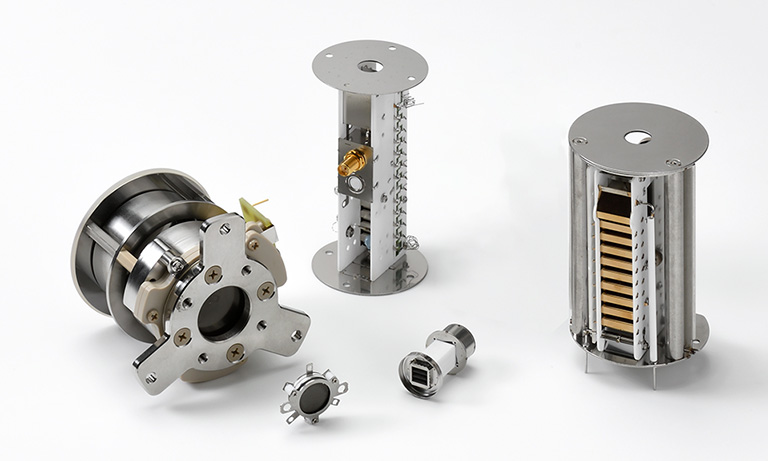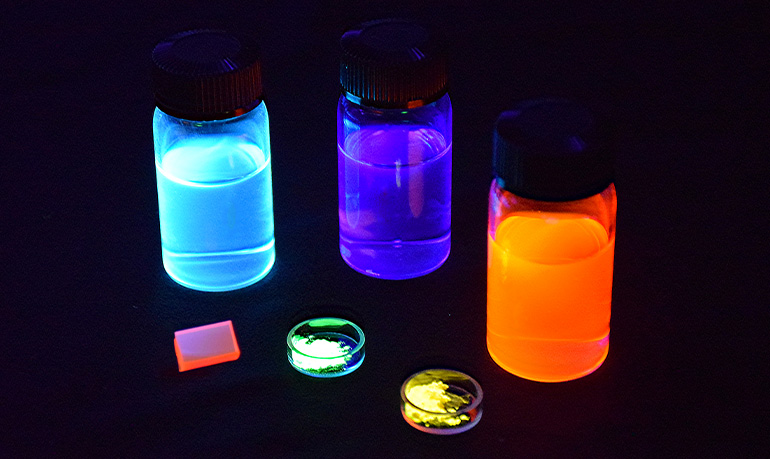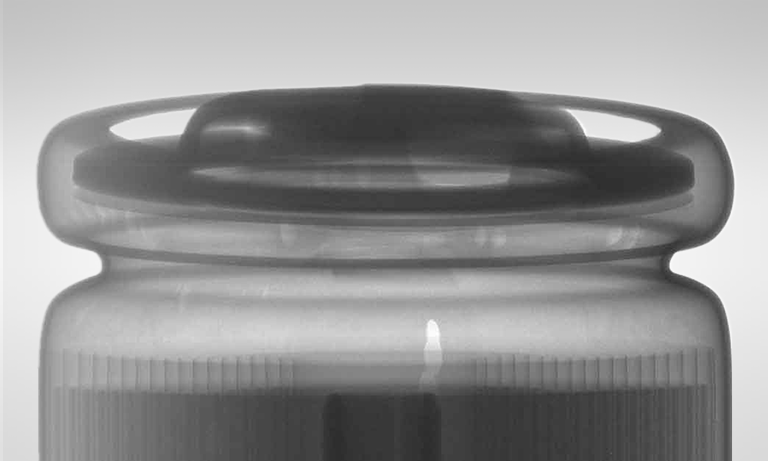United Kingdom (EN)
Select your region or country.
Optical mammography (Detecting and monitoring the breast cancer)
Introduction
The breast cancer incidence rate has been increasing in Japanese women. A measurement technology for diagnosing and monitoring responses to the treatment is important to improve the QOL (Quality of Life) of breast cancer patients. The near infrared spectroscopy (NIRS), which is a noninvasive measurement technique to quantify the absorption and scattering coefficients, hemoglobin concentration, and tissue oxygen saturation in the biological tissue, is expected to be useful for detecting change in those parameters due to growth or shrinkage of the breast cancer. The optical mammography is a NIRS system designed for breast measurement and will provide earlier detection and easier monitoring of the breast cancer.
Time-resolved spectroscopy
The light used for NIRS measurement is near-infrared light in the wavelength range 700 nm to 1100 nm which is relatively easier to pass through the biological tissue compared to other wavelength. The light by which biological tissue is irradiated is mainly absorbed by hemoglobin, water and lipid. The concentration of the oxy-hemoglobin (O2Hb)and deoxy-hemoglobin(HHb)can be quantified based on their specific absorption characteristics. The tissue oxygen saturation (StO2) is obtained from the ratio of O2Hb to the total hemoglobin (tHb). We use a measurement technique utilizing pulsed laser called time-resolved spectroscopy (TRS) which is expected to show better quantitativeness and reproducibility compared to techniques utilizing CW laser and intensity modulated laser.
The principle of the time-resolved spectroscopy
As shown in Figure 1, the biological tissue is irradiated with near-infrared pulsed laser, and the light passed through the tissue is detected. In order to obtain the absorption and scattering coefficients of the biological tissue, the temporal profile of the detected light is analyzed based on the photon diffusion theory which expresses the photon migration in the scattering media. By using Eq. (1), the \(O_2Hb\), \(HHb\), \(tHb\), and \(StO_2\) are determined from the absorption coefficients obtained for several wavelengths.
\( \mu_{a}^{\lambda} \) = \( \varepsilon_{O_{2}Hb}^{\lambda} \) \(C_{O_{2}Hb} \)+\( \varepsilon_{HHb}^{\lambda} \) \(C_{HHb} \)+\( \mu_{a,BG}^{\lambda} \) (1)
\(\varepsilon_{O_{2}Hb}^{\lambda} \): Molar extinction coefficient of oxy-hemoglobin (\(cm^{-1}・\mu M^{-1}\))
\(\varepsilon_{HHb}^{\lambda} \): Molar extinction coefficient of deoxy-hemoglobin (\(cm^{-1}・\mu M^{-1}\))
\(\mu_{a,BG}^{\lambda} \): Absorption coefficient of background medium(\(cm^{-1}\))
\(C_{O_{2}Hb} \)(\(\mu M\)): Oxy-hemoglobin concentration
\(C_{HHb}\)(\(\mu M\)): Deoxy-hemoglobin concentration
\(C_{tHb}\) = \(C_{O_{2}Hb}+C_{HHb}\)(\(\mu M\)): Total hemoglobin concentration
\(StO_2\) =100\(\times\frac{C_{O2Hb}}{C_{tHb}}\)(\(%\)): Tissue oxygen saturation
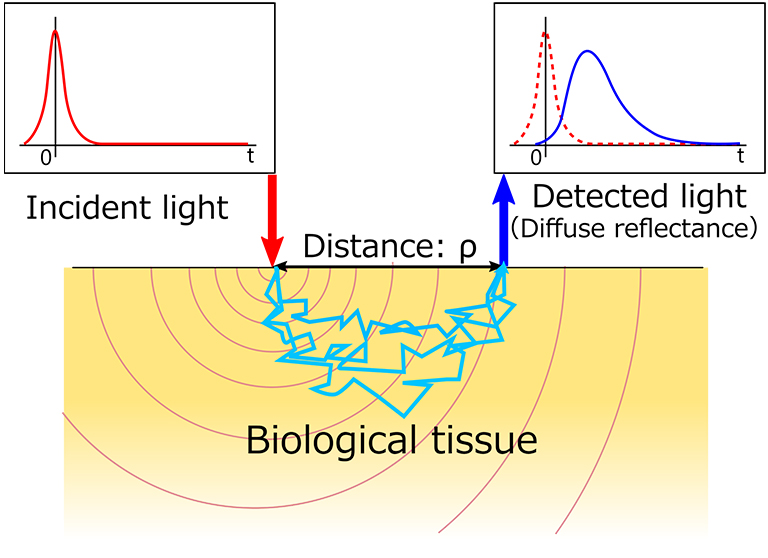
Figure 1. Schematic of the time-resolved spectroscopy in reflectance geometry.
Optical mammography
Figure 2 shows the optical mammography which we are aiming at developing as a compact and portable diagnostic imaging system to obtain functional image at the bedside.
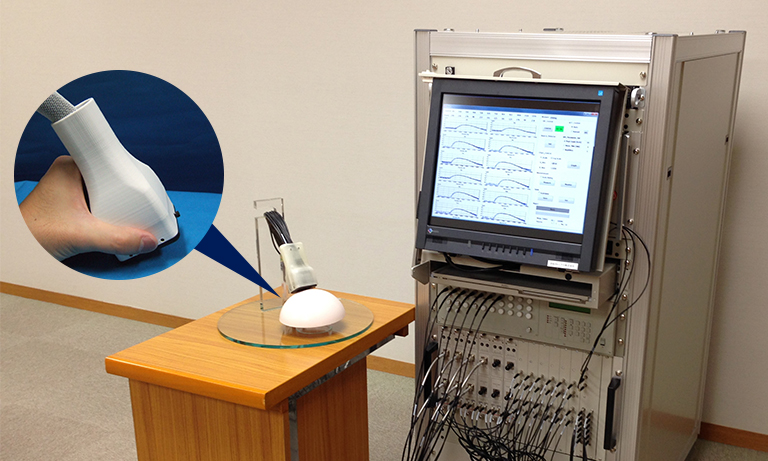
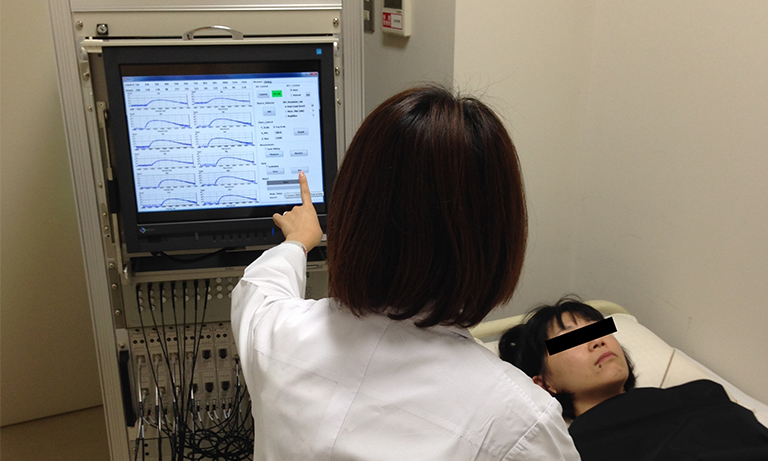
Figure 2. The pictures of optical mammography. The hand-held probe (left) is used to carry out the measurement in a supine position (right).
Preliminary clinical measurements
Preliminary clinical measurements were performed to confirm the ability of the optical mammography to measure responses during chemotherapy in a breast cancer patient, who received treatment at Hamamatsu university school of medicine. Measurement were carried out at three time points to measure responses during chemotherapy: a baseline measurement was performed before starting chemotherapy, and the second and third measurements were carried out 3 and 6 weeks after starting chemotherapy, respectively. The ultrasound images of the breast tumor shown in Figure 3 indicate that the tumor size had gradually decreased during chemotherapy. The tomographic images and plots of the maximum values within the reconstruction region of tHb concentration are shown in Figure 3. These results demonstrated that the tHb concentration was higher in the diseased breast compared with the healthy breast, and decreased during chemotherapy. In these measurements, we confirmed that the optical mammography has the potential to detect responses during chemotherapy. Measuring the hemoglobin concentration and tissue oxygen saturation is expected to be useful to detect the responses during chemotherapy and evaluate the effect of the treatment in a short time (one to 10 days).
(a)Location of tumor
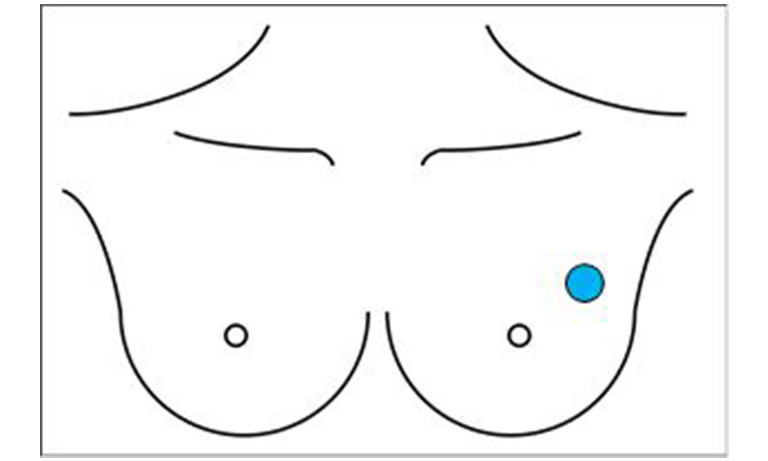
Location of tumor
(b)
Baseline
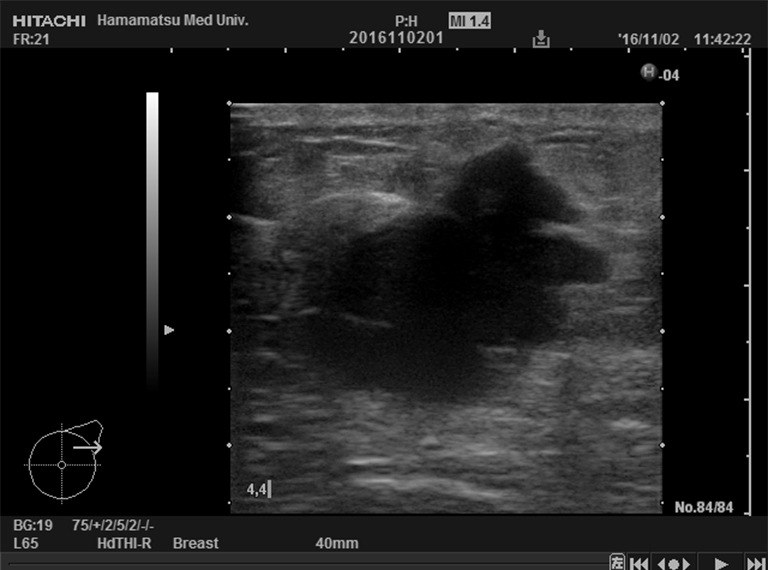
26×28×21 mm
3 weeks later
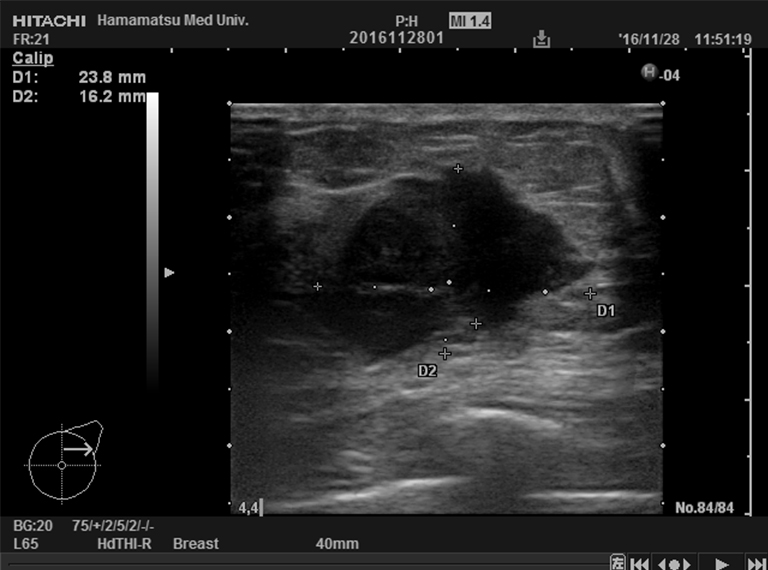
26×22×17 mm
6 weeks later
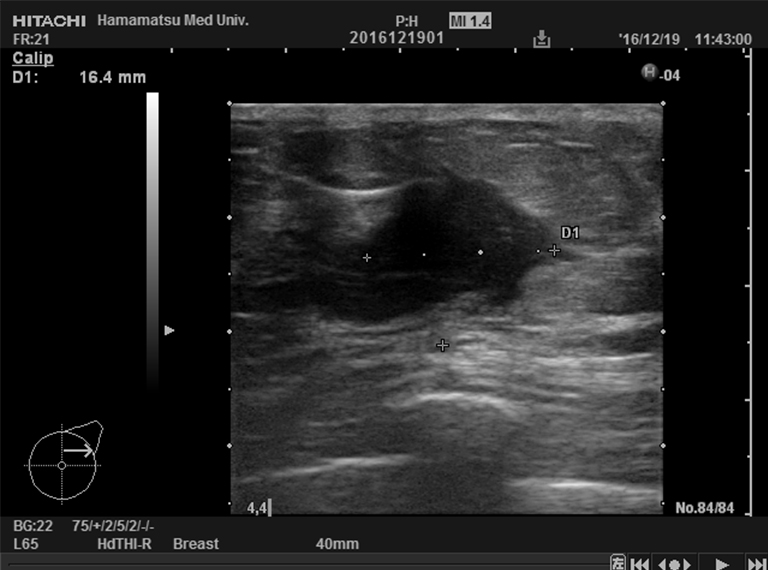
18×16×10 mm
(c)
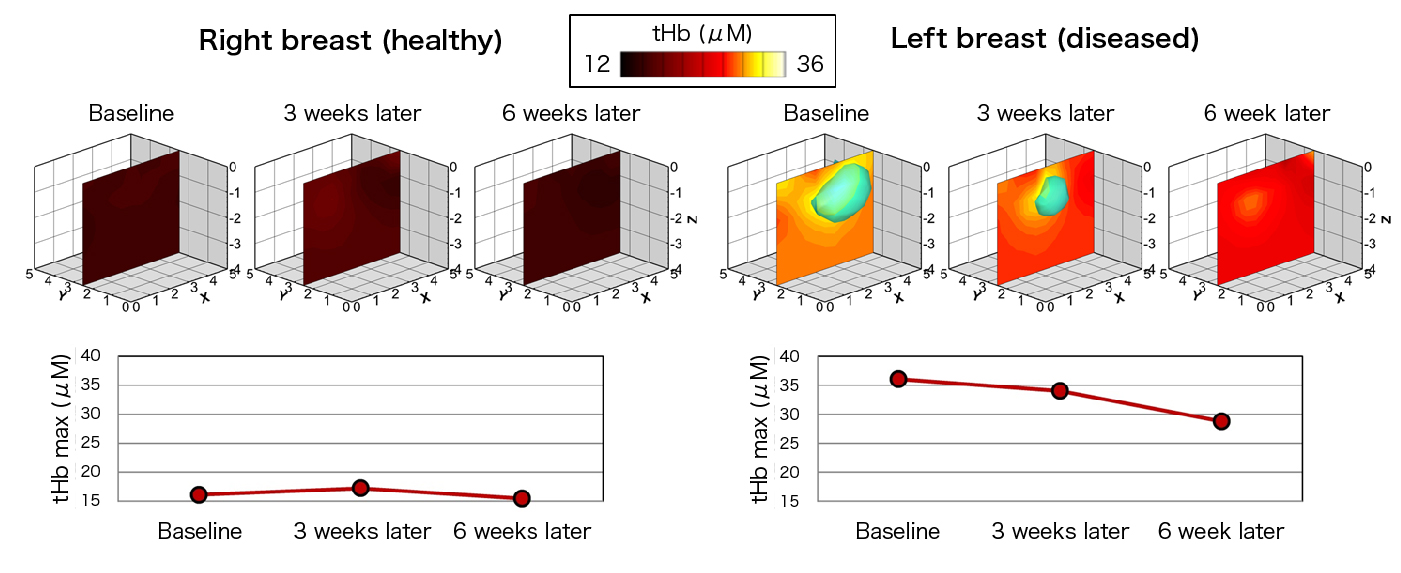
Figure 3. The location of tumor (a), ultrasound images (b), and reconstructed images and plots of maximum value of total hemoglobin concentration obtained by optical mammography (c) during chemotherapy in a breast cancer patient.
Future work
We intend to modify the measurement procedure and image reconstruction algorithm to improve the quality and quantitativeness of the reconstructed image.
- Confirmation
-
It looks like you're in the . If this is not your location, please select the correct region or country below.
You're headed to Hamamatsu Photonics website for GB (English). If you want to view an other country's site, the optimized information will be provided by selecting options below.
In order to use this website comfortably, we use cookies. For cookie details please see our cookie policy.
- Cookie Policy
-
This website or its third-party tools use cookies, which are necessary to its functioning and required to achieve the purposes illustrated in this cookie policy. By closing the cookie warning banner, scrolling the page, clicking a link or continuing to browse otherwise, you agree to the use of cookies.
Hamamatsu uses cookies in order to enhance your experience on our website and ensure that our website functions.
You can visit this page at any time to learn more about cookies, get the most up to date information on how we use cookies and manage your cookie settings. We will not use cookies for any purpose other than the ones stated, but please note that we reserve the right to update our cookies.
1. What are cookies?
For modern websites to work according to visitor’s expectations, they need to collect certain basic information about visitors. To do this, a site will create small text files which are placed on visitor’s devices (computer or mobile) - these files are known as cookies when you access a website. Cookies are used in order to make websites function and work efficiently. Cookies are uniquely assigned to each visitor and can only be read by a web server in the domain that issued the cookie to the visitor. Cookies cannot be used to run programs or deliver viruses to a visitor’s device.
Cookies do various jobs which make the visitor’s experience of the internet much smoother and more interactive. For instance, cookies are used to remember the visitor’s preferences on sites they visit often, to remember language preference and to help navigate between pages more efficiently. Much, though not all, of the data collected is anonymous, though some of it is designed to detect browsing patterns and approximate geographical location to improve the visitor experience.
Certain type of cookies may require the data subject’s consent before storing them on the computer.
2. What are the different types of cookies?
This website uses two types of cookies:
- First party cookies. For our website, the first party cookies are controlled and maintained by Hamamatsu. No other parties have access to these cookies.
- Third party cookies. These cookies are implemented by organizations outside Hamamatsu. We do not have access to the data in these cookies, but we use these cookies to improve the overall website experience.
3. How do we use cookies?
This website uses cookies for following purposes:
- Certain cookies are necessary for our website to function. These are strictly necessary cookies and are required to enable website access, support navigation or provide relevant content. These cookies direct you to the correct region or country, and support security and ecommerce. Strictly necessary cookies also enforce your privacy preferences. Without these strictly necessary cookies, much of our website will not function.
- Analytics cookies are used to track website usage. This data enables us to improve our website usability, performance and website administration. In our analytics cookies, we do not store any personal identifying information.
- Functionality cookies. These are used to recognize you when you return to our website. This enables us to personalize our content for you, greet you by name and remember your preferences (for example, your choice of language or region).
- These cookies record your visit to our website, the pages you have visited and the links you have followed. We will use this information to make our website and the advertising displayed on it more relevant to your interests. We may also share this information with third parties for this purpose.
Cookies help us help you. Through the use of cookies, we learn what is important to our visitors and we develop and enhance website content and functionality to support your experience. Much of our website can be accessed if cookies are disabled, however certain website functions may not work. And, we believe your current and future visits will be enhanced if cookies are enabled.
4. Which cookies do we use?
There are two ways to manage cookie preferences.
- You can set your cookie preferences on your device or in your browser.
- You can set your cookie preferences at the website level.
If you don’t want to receive cookies, you can modify your browser so that it notifies you when cookies are sent to it or you can refuse cookies altogether. You can also delete cookies that have already been set.
If you wish to restrict or block web browser cookies which are set on your device then you can do this through your browser settings; the Help function within your browser should tell you how. Alternatively, you may wish to visit www.aboutcookies.org, which contains comprehensive information on how to do this on a wide variety of desktop browsers.
5. What are Internet tags and how do we use them with cookies?
Occasionally, we may use internet tags (also known as action tags, single-pixel GIFs, clear GIFs, invisible GIFs and 1-by-1 GIFs) at this site and may deploy these tags/cookies through a third-party advertising partner or a web analytical service partner which may be located and store the respective information (including your IP-address) in a foreign country. These tags/cookies are placed on both online advertisements that bring users to this site and on different pages of this site. We use this technology to measure the visitors' responses to our sites and the effectiveness of our advertising campaigns (including how many times a page is opened and which information is consulted) as well as to evaluate your use of this website. The third-party partner or the web analytical service partner may be able to collect data about visitors to our and other sites because of these internet tags/cookies, may compose reports regarding the website’s activity for us and may provide further services which are related to the use of the website and the internet. They may provide such information to other parties if there is a legal requirement that they do so, or if they hire the other parties to process information on their behalf.
If you would like more information about web tags and cookies associated with on-line advertising or to opt-out of third-party collection of this information, please visit the Network Advertising Initiative website http://www.networkadvertising.org.
6. Analytics and Advertisement Cookies
We use third-party cookies (such as Google Analytics) to track visitors on our website, to get reports about how visitors use the website and to inform, optimize and serve ads based on someone's past visits to our website.
You may opt-out of Google Analytics cookies by the websites provided by Google:
https://tools.google.com/dlpage/gaoptout?hl=en
As provided in this Privacy Policy (Article 5), you can learn more about opt-out cookies by the website provided by Network Advertising Initiative:
http://www.networkadvertising.org
We inform you that in such case you will not be able to wholly use all functions of our website.
Close











